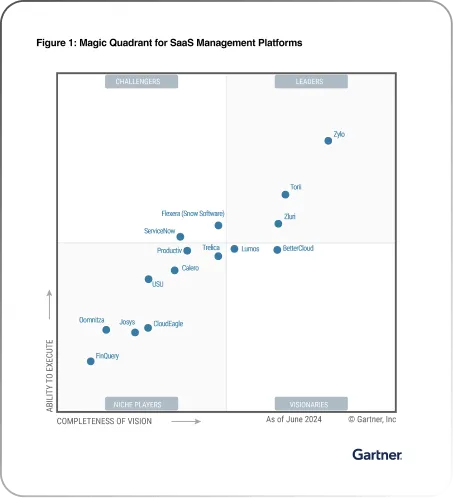SOX 302 and 404 share similar objectives of improving the effectiveness of internal controls and enhancing financial reporting transparency. However, both regulations mandate the fulfillment of different obligations. In this article, we'll understand what distinct requirements set them apart.
Sarbanes-Oxley Act Of 2002 (SOX) is divided into 11 sections. Within these sections, particular emphasis and importance are placed on Section 302 and Section 404. But why? These sections contain a substantial number of requirements outlined by the Sarbanes-Oxley Act.
Section 302 and Section 404 play a significant role in addressing fraudulent practices, particularly in areas related to financial reporting, certifications, and internal controls.
However, both sections have specific requirements that must be met to become SOX compliant. In this article, we'll discuss how SOX sections 302 and 404 differ from each other and what requirements need to be fulfilled.
SOX 302 vs 404: Comparison Based On
Different Parameters
Below, we have thoroughly differentiated Sarbanes-Oxley 302 vs 404 based on different parameters. This comparative analysis aims to assist you in understanding the difference between the two:
1: Regulatory Differences Of SOX 302 vs 404
- Section 302 states the corporate responsibility for financial reports. Under this provision, the CEO and CFO are required to personally certify the completeness and accuracy of all records.
More specifically, they must acknowledge their individual responsibility for internal controls and confirm that they have conducted a comprehensive review of these controls within the preceding 90 days. - On the other hand, Section 404 states that management needs to assess internal controls. Under this section, companies must provide shareholders and the U.S. SEC (Securities and Exchange Commission) with annual disclosures and quarterly updates.
This section outlines specific criteria for overseeing and maintaining internal controls associated with the company's accounting and financial processes.
It also necessitates that companies covered by SOX must undergo an annual external audit conducted by an independent audit firm. This annual assessment helps in evaluating the efficiency of all internal controls.
Furthermore, after completion of the assessment carried out by audit firms ( involved in the process of reviewing SOX compliance), the audit firm directly shares the assessment reports to the Securities and Exchange Commission (SEC).
2: Sections Under SOX 302 & SOX 404
SOX 303 vs 404 have different sections under them. Under SOX 302, there are in total 7 sections, which are:
- 302.2 – Establish safeguards to prevent data tampering
This section mandates companies to implement measures or protective mechanisms to prevent unauthorized modification or tampering of financial data.
- 302.3 – Establish safeguards to establish timelines
Under this section, organizations’ need to establish controls that help ensure accurate and timely reporting of financial information. They also need to establish clear timelines for financial reporting processes.
- 302.4.A – Establish and maintain internal controls
This emphasizes the necessity for companies to implement internal controls, which are guidelines, processes, and procedures designed to ensure the safety of data and the accuracy of financial reporting.
- 302.4.B – Establish verifiable controls to track data access
This section mandates your team to put controls (that are needed for verification) in place. This helps monitor and track access to financial data, ensuring transparency and accountability.
- 302.4.C – Ensure that safeguards are operational
This indicates that the established safeguards and controls need to be not only in place but also operational, meaning they actively function to fulfill their intended purposes.
- 302.4.D – Periodically report the effectiveness of safeguards
This section requires companies to periodically assess and report on the effectiveness of the controls implemented.
- 302.5.A&B – Detect Security Breaches
This section suggests that companies must have mechanisms in place (possibly related to information security) to detect and respond to security breaches.
Whereas under SOX 404 there are 3 sections, which are:
- 404.A.1 – Disclose security safeguards to independent auditors
This section implies that companies need to disclose details about their security safeguards, which are measures or protocols implemented to protect financial data. The disclosure is specifically directed to independent auditors, who are external parties responsible for reviewing the accuracy of financial statements.
- 404.A.2 – Disclose security breaches to independent auditors
In the event of a security breach, where there is unauthorized access or compromise of financial data, companies are required to disclose this information to independent auditors. Transparency about such incidents is crucial for maintaining the integrity of financial reporting.
- 404.B – Disclose failures of security safeguards to independent auditors
If there are gaps or shortcomings in the implemented security safeguards, companies are obligated to disclose these failures to independent auditors. This disclosure ensures that any weaknesses in internal controls are identified and addressed.
Also Read: Want to know more about it, you can walk through SOX 404(b) compliance
3: Compliance Requirements
Sarbanes-Oxley section 302 vs 404 mandates organizations to fulfill distinct requirements.
SOX 302 has listed the following requirements:
- Disclosure Requirements: SOX Section 302 focuses on the disclosure of controls and procedures.
- Personal Accountability: Signing officers (CEO or CFO) need to be personally accountable for verifying the accuracy and reliability of their organization’s financial information.
- Reporting Requirements: The certification process outlined in SOX Section 302 encompasses more than just verifying the accuracy of financial information. It includes a broader scope that involves the proper implementation and maintenance of internal controls and procedures within a company. Also, it mandates reporting deficiencies or changes related to internal controls.
- Confirmation Of Review
- Executive officers need to confirm that they have thoroughly reviewed the financial and internal control reports when signing off on SOX 302 disclosures.
- They are required to state that the report does not contain false or misleading statements.
- Additionally, they must affirm that the financial statements accurately represent the company's financial condition and results of operations during the covered periods.
- Personal Responsibility: Signing a SOX 302 certification document involves taking personal responsibility for its truthfulness.
- Documentation Of Procedures: The process also includes disclosing all relevant procedures and providing clear details about any changes during the reporting period.
- Preparation Through Questionnaires
- To prepare for the quarterly certification, companies send questionnaires to individuals with significant responsibility for financial results.
- The questionnaires serve the purpose of identifying significant changes in internal controls not yet reported.
- The questionnaires also inquire about awareness of any fraudulent practices within the organization.
Meanwhile, SOX 404 has listed the following requirements:
- Conducts Annual Assessment: Companies are obligated to conduct an annual assessment and report on the effectiveness of their internal control structure.
- Management's Assessment And Testing:
- This involves management's assessment and testing of the company's internal controls and procedures specifically related to financial reporting.
- The testing primarily focuses on evaluating and reporting on both the design and operating effectiveness of the internal controls.
- Furthermore, management needs to review the results of the testing, and categorize identified control testing failures as deficiencies, significant deficiencies, or material weaknesses.
- Report To Audit Committee And Board Of Directors: Companies are required to report identified deficiencies to the Audit Committee and the Board of Directors.
- Disclosure of Material Weaknesses: Material weaknesses, when identified, must be disclosed in the company's annual 10-K financial report.
- Independent External Auditor Inspection:
- In addition to the internal control assessment, SOX mandates that publicly traded companies undergo an independent external auditor inspection of their internal control practices.
- The results of the external auditor's inspection, along with an audit report, must be included within the company's financial report.
4: Documents Required
SOX 302 mandates organizations to submit the following documents:
- Quarterly certifications from signing officers confirming the accuracy of financial information.
- Documentation of the review and assessment of internal controls within the past 90 days.
- Reports detailing any changes or deficiencies related to internal controls.
Whereas SOX 404 requires the submission of the following documents:
- Annual reports of assessment on the effectiveness of the internal control structure.
- Results of an independent external audit inspecting internal control practices.
- Documentation categorizes any identified control testing failures as deficiencies, significant, or material weaknesses.
- Reports on deficiencies reported to the Audit Committee and the Board of Directors.
- Disclosure of material weaknesses in the annual 10-K financial report.
5: Frequency Of Audit Conduct & Reporting Requirements
- SOX 302 requirements need to be addressed every quarter, where companies conduct a survey and submit signed certifications with their quarterly filings of SEC. This ensures that signing officers evaluate the effectiveness of the organization's internal controls within 90 days.
- On the other hand, SOX 404 requirements demand a continuous effort from companies. This involves an annual independent audit, usually performed by external auditors.
The outcomes and findings of this audit, particularly concerning the effectiveness of the company's internal controls, must be documented and included in the financial report produced at the end of each fiscal year.
In simpler terms, companies must consistently assess and audit their internal controls throughout the year, with the results being reported annually in their financial statements.
6: Risk Management
- SOX Section 302 plays a crucial role in risk management by imposing strict requirements on company executives regarding the accuracy and reliability of financial reporting. By mandating executives to personally certify the integrity of financial statements, SOX 302 enhances transparency and accountability within organizations. This helps in identifying and mitigating risks associated with financial mismanagement, fraud, and inaccuracies in reporting.
- Whereas, Section 404 directly helps in risk management by mandating companies to evaluate and report on the effectiveness of their internal controls over financial reporting. This ensures the detection and prevention of errors, fraud, and other risks related to financial reporting.
SOX 302 vs 404: Comparison Table
Here’s a quick summary of Sarbanes-Oxley 302 and 404 in tabular format:
Now, let’s understand out of these two SOX sections which one is more suitable for your organization.
Which SOX Compliance Framework is Suitable for Your Organization?
Determining which SOX compliance framework is most suitable for your organization requires careful consideration of specific needs, industry context, and organizational priorities.
For instance, SOX Section 302 emphasizes quarterly certifications and personal accountability for financial accuracy. Meanwhile, SOX Section 404 involves a continuous, annual assessment with a broader scope, encompassing internal and external audits.
The choice between these frameworks hinges on factors such as organizational size, reliance on information technology, and the desire for a comprehensive approach to risk management and governance.
By evaluating these aspects thoughtfully, organizations can align with the most fitting SOX compliance framework to enhance transparency, internal controls, and overall financial integrity.
However, in addition to this query, another question emerges: Can SOX Sections 302 and 404 work cohesively? Let’s find out.
The Interplay of SOC 302 & SOX 404 in Financial Reporting: Can They Work Together?
Absolutely, SOX 302 and SOX 404 can indeed work together seamlessly in financial reporting. SOX 302's quarterly certifications provide frequent checks on financial accuracy and internal controls, which further complement the thorough annual evaluation required by SOX 404. This collaborative approach ensures a well-rounded and proactive strategy, enhancing overall compliance and transparency in financial reporting.
SOX 302 & 404: Mandatory Requirements To Ensure Financial Data Integrity
In conclusion, adherence to SOX 302 and 404 is not merely a regulatory necessity but a crucial commitment to maintaining the integrity of financial data within organizations. These mandatory requirements establish a robust framework, ensuring transparency, accuracy, and accountability in financial reporting processes.
However, innovative solutions like Zluri’s access review platform can streamline the complexities of SOX compliance. It thoroughly reviews access rights, ensuring that only the right users gain access to apps and data, thereby protecting sensitive data from security breaches.
Moreover, by conducting assessments, you can also effectively meet other mandatory regulations requirements like HIPAA, SOC 1 and 2, SOX, and ISO 27001.
Not only that, to strengthen the organization's security posture, it enables teams to implement access policies such as Segregation of Duties (SoD) to ensure data integrity, which also acts as a strategic step to meet regulatory requirements.
Furthermore, to provide external auditors with proof of compliance adherence, Zluri documents the entire audit process and generates curated UAR reports. These reports serve as evidence that all the requirements stated by compliance regulations are fulfilled without fail, providing transparency and accountability in the compliance journey.
This is how you can automate Monday access review in Zluri.
FAQs
1. What Does Section 302 Of SOX Specify?
SOX 302 Specifies that the United States publicly traded businesses’ CEO and CFO must certify that all financial records are complete and accurate/ reliable.
2. What Is The Difference Between SOX 404 A and B?
The basic difference between SOX 404 A and B is that section 404(a) requires public and foreign companies who have business in the US to establish and uphold internal controls. Whereas Section 404(b) applies to particularly smaller public companies, although it isn't obligatory for all of them.
3. What Is The COSO Framework?
The COSO (Committee of Sponsoring Organizations of the Treadway Commission) framework is a widely recognized and utilized internal control framework. It assists organizations in designing, implementing, and assessing internal control systems and helps them connect their internal controls to their processes.









.svg)





























.webp)







.webp)
.webp)





.webp)